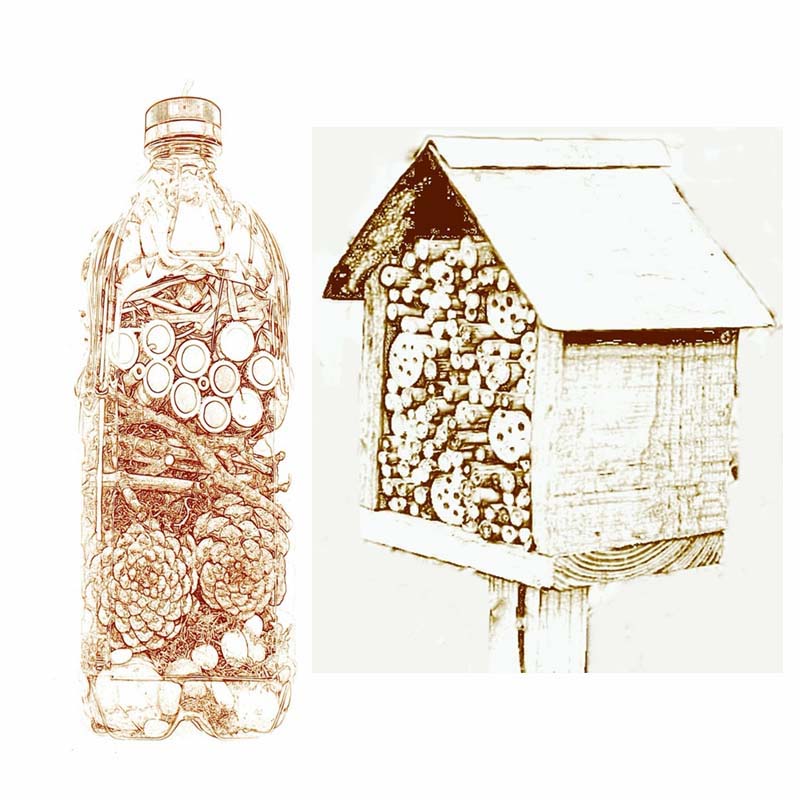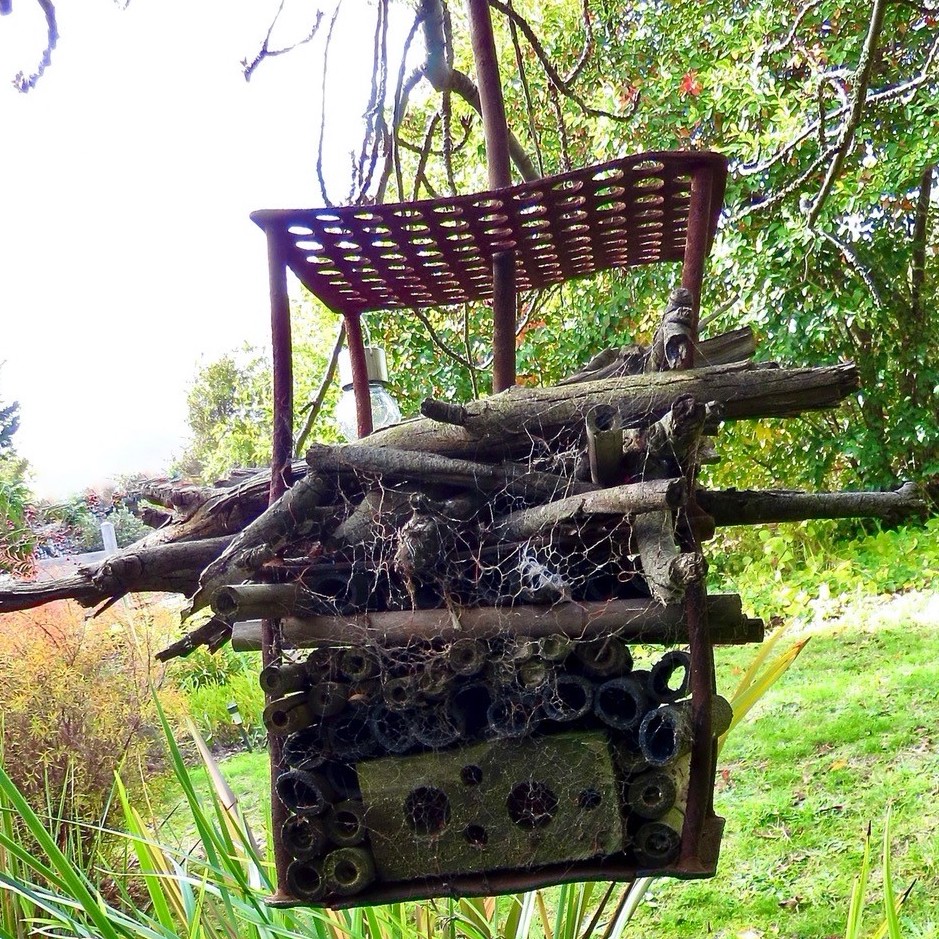June 1st, 2020Glen, about the house -Bugged about the house
I should have known I would start something when I made mention of building a “bug hotel” for predatory insects to control the pest population in the garden a few issues ago.
It not only drew quite a few comments and questions but it also means I now have been given a new project of my own – turning the old decorative birdcage in our flowering cherry tree into a high class bug palace to join our other bug accommodation, pictured above right.
But this is in answer to a request from Anka of Woodend to learn how to build one of her own.

There are no set rules, other than to create a haven for the bugs and other assorted predatorial good guys from where they can patrol and protect your garden. As you can see from the recycled letterbox and plastic bottle, pictured below right, with one side removed, any type of container in which to place an assortment of twigs, gumnuts, pine cones etc. will do fine.
I’ve seen “hotels” fashioned from a bundle of twigs and leaves, placed into horizontal cans and plastic drink bottles (with the top cut off), and hung from the branches of trees.
Other options include making a pyramid of empty flower pots (on their sides) and stuffing them with dried leaves, straw and twigs etc. Or something as simple as wrapping a pile of pine cones in chicken wire to either sit under, or hang from a shady tree. I’ve even seen a string bag of pine cones hanging in the shade as makeshift accommodation.
More substantial and palatial examples can be constructed using timber and bricks, particularly those with perforated sides, strategically spaced to provide cavities for holding twigs.
The Halls Gap Community Botanic Gardens have several magnificent, fully-occupied examples fashioned out of square four-gallon kerosene cans, strategically located on large gum trees around the park.
Bee hotels
But the bug hotels, often seen side-by-side with other, usually wooden, structures featuring rows of neat little round holes are bee hotels, ideally formed to accommodate bees.
These can need a little bit of carpentery skills to build with timber, but bamboo stems, or even short lengths of black poly pipe stacked closely together in the frame, will make a perfect substitute. Pre-made and kit versions of these are often to be found in gift shops and garden outlets.
Those of us lucky enough to live in a country area are most likely to help the solitary-living native bees, who will benefit most from a bee hotel, and the security it will provide.
As well as providing accommodation, it’s most important to ensure there are plenty of bee-attracting flowering plants, and a steady water supply for them.

But remember, bees and other insects can’t cope with more than a trickle of water, for fear of drowning. A shallow bowl filled with small pebbles, or marbles, is the perfect solution, but place the bowl in a shady spot and be sure to keep the water level topped up.
If you are seriously interested in the bug hotel culture, and/or attracting native bees, check with Google, there are simply pages of information and illustrations of every possible type of construction. Also there are pages of bee and bug keeping-projects to intrigue children of all ages.
Got a gardening question? Ask Glen. Email glenzgarden@gmail.com










